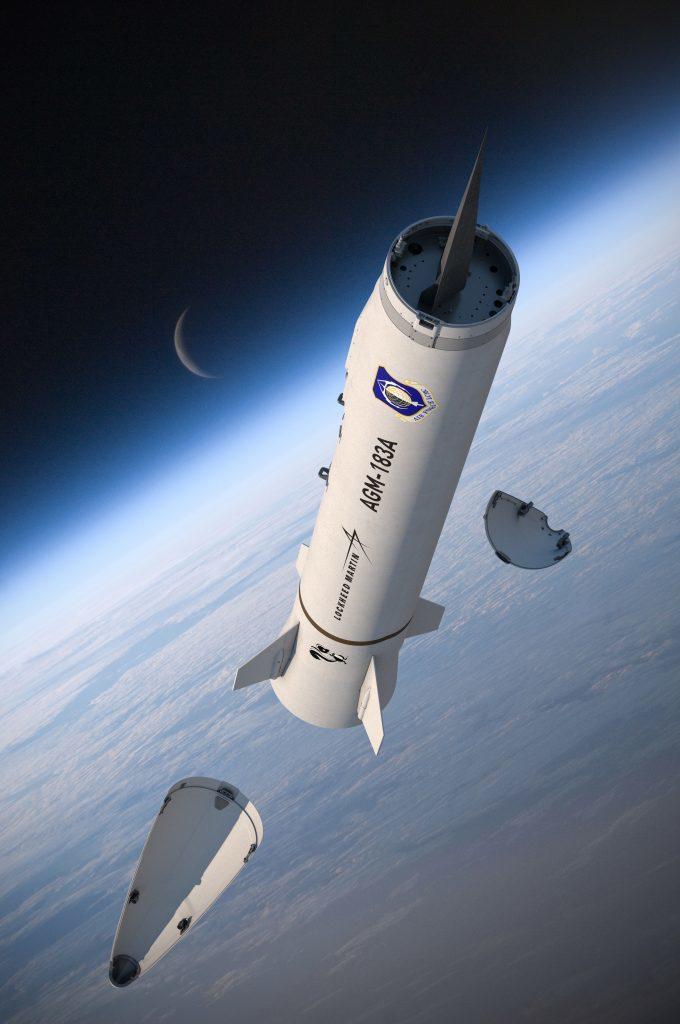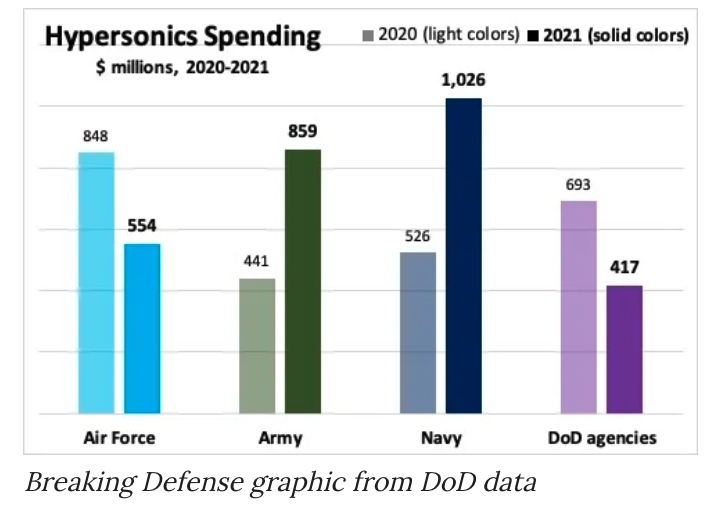Pentagon Reviewing Hypersonic Program As Investments In Mach 5 Missiles Expected To Soar
The Office of the Inspector General, US Department of Defense (DoD IG) is determining if it should allocate more funds to hypersonic development programs as it seems the US is behind the hypersonic curve.
The DoD IG's review began in April and is centered around the future allocation of funds for new weapons that can travel five times the speed of sound. The Pentagon's emphasis on hypersonic technology started in 2017 as Russia and China ramped up their efforts.
The Pentagon's fiscal 2021 budget earmarks approximately $3.2 billion, up from $400 million approved in 2020. Planned spending on hypersonics could reach upwards of $12.6 billion by 2025, Lieutenant Colonel Robert Carver, a Pentagon spokesman, told Bloomberg in an email.
Senator James Inhofe, a senior Republican from oil-producing Oklahoma and Senate Armed Services Chairman, explained in a Defense News op-ed in December how the military's hypersonic testing labs were inadequate, writing "dilapidated testing infrastructure is holding us back from catching up to our enemies. Just look at hypersonic weapons: Beijing is parading around dozens of its newest weapons, and we have yet to build one."
Mark Lewis, the DoD's director of research and engineering for modernization, who oversees the military's hypersonic effort, recently said a "balanced approach" to testing is needed.
"We can test something into oblivion and you never wind up building it, you never wind up using it but at the same time there are clearly tests you want to do, you have to do before you build a system," Lewis said.
We've noted on several occasions that hypersonic development and testing has been a high priority by the military. In March, the DoD launched a common hypersonic glide body missile from the Pacific Missile Range Facility, Kauai, Hawaii.
U.S. Navy and U.S. Army jointly tests hypersonic glide body pic.twitter.com/9Fr8YvlBUS
— Dylan Malyasov (@DylanMalyasov) March 21, 2020
The Air The Air Force Global Strike Command made mention in April that it wants to mount hypersonic AGM-183 Air-launched Rapid Response Weapons externally on the Rockwell B-1 Lancer supersonic bomber.
With hypersonics now becoming a top priority for the DoD, here is the breakdown of spending on development programs regarding the new missiles.
Breaking Defense outlines four of the hypersonic program the DoD is working on:
- Air-launched boost-glide: Air Force ARRW (Air-launched Rapid Response Weapon). The Air Force also had another program in this category, HCSW (Hypersonic Conventional Strike Weapon), but they canceled it to focus on ARRW, which the service considers more innovative and promising.
- Surface-launched boost-glide: Army LRHW (Long Range Hypersonic Weapon) and Navy CPS (Conventional Prompt Strike). Both weapons share the same rocket booster, built by the Navy, and the same Common Hypersonic Glide Body, built by the Army, but one tailors the package to launch from a wheeled vehicle and the other from a submarine.
- Air-launched air-breathing: HAWC (Hypersonic Air-breathing Weapons Concept) and HSW-ab (Hypersonic Strike Weapon-air breathing). Arguably the most challenging and cutting-edge technology, these programs are both currently run by DARPA, which specializes in high-risk, high-return research, but they'll be handed over to the Air Force when they mature.
- Surface-launched air-breathing: This is the one category not in development – at least not in the unclassified world. But Lewis said, "eventually, you could see some ground-launched air breathers as well. I personally think those are very promising."
Some of the first hypersonic weapons could be deployed with the Army in 2023. Though, as we've previously noted, Russia has already deployed hypersonic missiles, and China has been doing many live-fire tests.
https://ift.tt/2SuqwUo
from ZeroHedge News https://ift.tt/2SuqwUo
via IFTTT






0 comments
Post a Comment